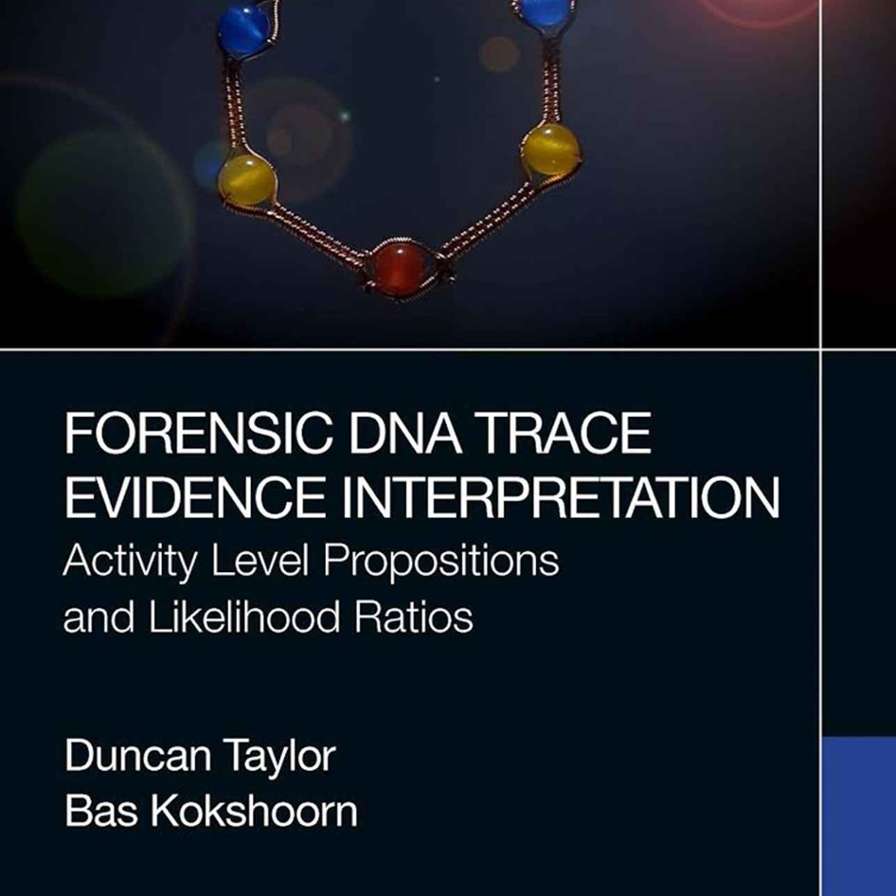Forensic DNA Trace Evidence Interpretation
Publication - January 2023

The book Forensic DNA Trace Evidence Interpretation provides all foundational information required for a reader to understand the practice of evaluating forensic biology evidence given activity level propositions. The book also guides the implementation of this practice into active casework within a forensic institution.
Foundational Concepts and Theory
The book begins by explaining basic concepts and foundational theory, compiling research and studies from forensic journal literature over the last 20 years. It explains the laws of probability, showing how they can be used to derive the likelihood ratio, which is used throughout the book to express the strength of evidence for any evaluation.
Key Concepts in Forensic Evaluation
Concepts such as the hierarchy of propositions, the difference between experts working in an investigative or evaluative mode, and the practice of case assessment and interpretation are explained to provide the reader with a broad grounding in forensic evaluation.
Activity Level Evaluations
Activity level evaluations are discussed in relation to biological material transfer, persistence, recovery, and prevalence. The book explores how biological material is transferred from one object to another, how long it can persist on an item, and how it can be recovered during forensic testing. Additionally, the expectations of the prevalence of biological material on objects in our environment are examined. These concepts, along with the factors affecting them, are discussed in detail.
The Evaluation Process
The authors explain the evaluation process, including how to structure case information and formulate propositions. They demonstrate how a likelihood ratio formula can be derived to evaluate forensic findings. The book introduces Bayesian networks, explaining what they represent and how they can be used in evaluations, as well as how evaluation can be tested for robustness.
Application to Forensic Casework
Using these tools, the authors demonstrate how methods used in activity level evaluations are applied to questions about body fluids. The book also includes chapters on reporting results and implementing activity level evaluation in a forensic laboratory.
Case Examples and Practical Application
Throughout the book, four cases are used as examples to demonstrate how to relate theory to practice. The authors detail how laboratories can integrate and implement activity level evaluation into their active casework.
Authors
- Duncan Taylor
- Bas Kokshoorn
Forensic Trace Dynamics research group
Thanks to new methods of analysis, it is now possible to detect even the smallest traces left behind at a crime scene or carried away by the suspect. What can this tiny, often hard-to-detect trace evidence tell us about the precise details of an event? This is the central question of the Forensic Trace Dynamics research group.